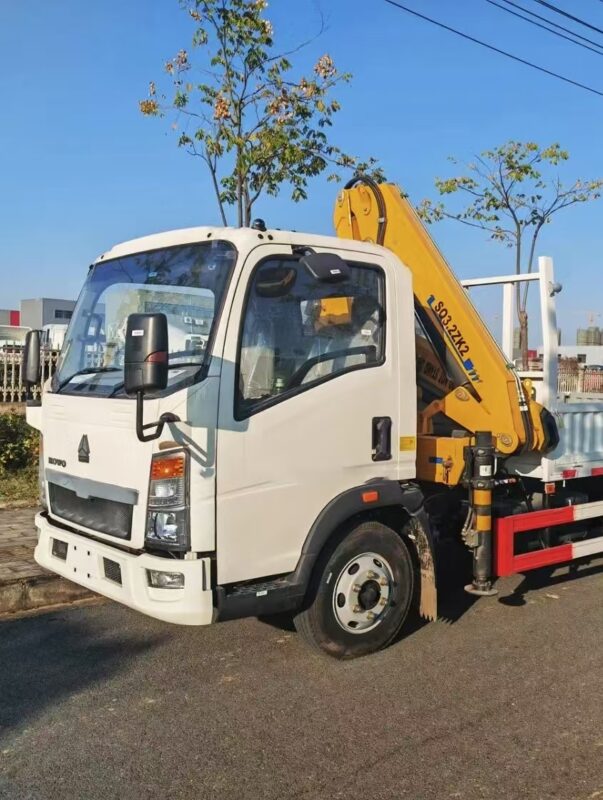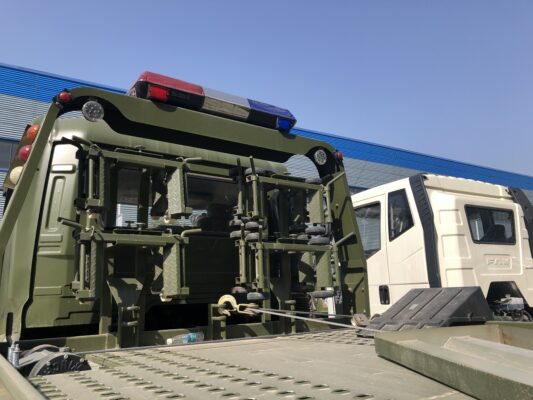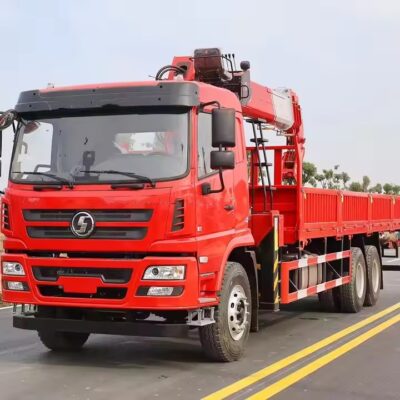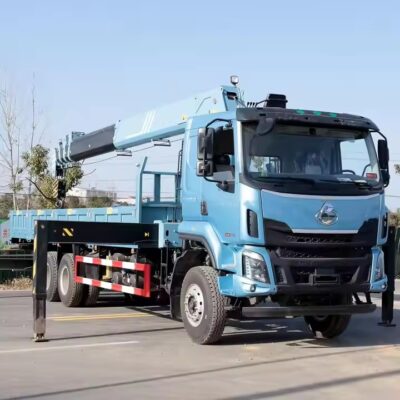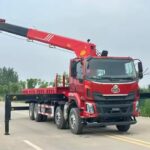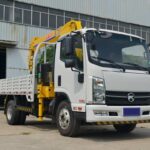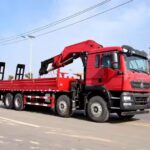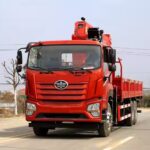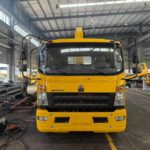Introduction
With the rapid development of construction technology and the increasing demands for safety, bokgabane, and energy conservation, tower cranes play an essential role in modern construction projects. Among the key components of tower cranes, the hoisting mechanism is crucial for lifting and lowering loads safely and efficiently. Traditional hoisting mechanisms typically rely on mechanical braking systems and fixed-speed motors, which can lead to inefficiencies, excessive energy consumption, and increased wear on mechanical components.
The introduction of variable frequency drive (VFD) technology into hoisting mechanisms has significantly improved their performance, offering benefits such as precise speed control, smooth acceleration and deceleration, energy savings, and enhanced safety. This article explores the application of frequency converters in tower crane hoisting mechanisms, analyzing the structure and design considerations of conventional VFD hoisting mechanisms and discussing the advantages of dual-frequency hoisting systems.
Structure and Design Considerations of Conventional VFD Hoisting Mechanisms
1. Working Principle of a VFD Hoisting System
A conventional hoisting mechanism in a tower crane consists of a motor, a gearbox, a drum, and a braking system. The motor generates the required torque, which is transmitted through the gearbox to the drum, allowing the lifting cable to move loads up and down. Traditional systems operate at fixed speeds, which can lead to abrupt starts and stops, increasing mechanical stress and reducing operational efficiency.
By integrating a frequency converter, or variable frequency drive (VFD), the hoisting mechanism can achieve smooth speed control by adjusting the motor’s frequency and voltage. This allows for a controlled start, variable-speed operation, and precise positioning of the load, significantly improving safety and efficiency.
2. Key Components of a VFD Hoisting System
A VFD-controlled hoisting system consists of the following components:
- Variable Frequency Drive (VFD): Regulates the motor speed by adjusting the frequency and voltage of the power supply.
- Three-Phase Induction Motor: The primary driver that powers the hoisting mechanism.
- Gearbox and Drum Assembly: Transfers motor power to the hoisting cable, allowing controlled lifting and lowering.
- Braking System: Includes both electrical and mechanical brakes to ensure safe stopping and holding of loads.
- Control System: Integrates sensors and feedback mechanisms to monitor load weight, speed, and positioning.
3. Design Considerations for VFD Hoisting Systems
When designing a VFD-controlled hoisting system for a tower crane, several critical factors must be considered:
- Load Capacity and Torque Requirements: The system must be capable of handling the maximum expected load while maintaining stable operation.
- Acceleration and Deceleration Control: Smooth starting and stopping are crucial to prevent load swinging and mechanical stress.
- Energy Efficiency: VFDs help reduce energy consumption by optimizing motor speed based on load requirements.
- Safety Features: Overload protection, emergency braking, and fault detection mechanisms must be incorporated.
- Environmental Conditions: Tower cranes operate in outdoor environments, so VFDs must be protected against dust, moisture, and temperature extremes.
Advantages of VFD-Controlled Hoisting Mechanisms
1. Improved Energy Efficiency
One of the most significant benefits of using VFDs in hoisting mechanisms is energy savings. Unlike traditional systems that run at full speed regardless of the load, VFDs allow motors to operate at variable speeds based on actual requirements. This reduces unnecessary energy consumption, leading to lower electricity costs and a more sustainable operation.
2. Enhanced Safety and Load Control
VFDs provide precise speed control, enabling smooth acceleration and deceleration. This minimizes sudden jerks and reduces the risk of load swinging, which is particularly crucial for handling fragile or heavy materials. Ho phaella moo, VFDs can integrate with load sensors and safety monitoring systems to prevent overloads and ensure safe operation.
3. Extended Equipment Lifespan
Mechanical components in conventional hoisting mechanisms experience significant wear due to abrupt starts and stops. VFDs eliminate these sudden changes by gradually ramping up and down the speed, reducing mechanical stress and extending the lifespan of motors, gearboxes, and brakes.
4. Reduced Maintenance Costs
Since VFDs contribute to smoother operation and reduced mechanical wear, they also lower maintenance requirements and costs. Components such as brakes and gearboxes experience less stress, leading to fewer breakdowns and longer service intervals.
5. Enhanced Operational Flexibility
With a VFD, operators can adjust lifting speeds according to the specific requirements of each task. Ka mohlala, slow speeds can be used for precision positioning, while higher speeds can be employed for general lifting operations. This level of flexibility improves efficiency and allows cranes to adapt to various construction needs.
Dual-Frequency Hoisting Mechanism: An Advanced Solution
1. Concept of Dual-Frequency Hoisting Mechanism
While conventional VFD hoisting mechanisms offer significant advantages, further enhancements can be achieved by implementing a dual-frequency hoisting system. This approach involves using two separate frequency converters for independent control of motor speed and braking functions.
2. Advantages of a Dual-Frequency System
a) Increased Redundancy and Reliability
A dual-frequency hoisting mechanism provides greater system reliability by incorporating two independent VFDs. In case of a failure in one frequency converter, the other can take over, ensuring continued operation and minimizing downtime.
b) Optimized Braking and Load Control
By using a dedicated frequency converter for braking control, the system can achieve smoother stopping without relying solely on mechanical brakes. This reduces brake wear and enhances overall safety.
c) Higher Efficiency in Heavy Load Conditions
In scenarios where tower cranes handle varying loads, a dual-frequency system can optimize motor performance by adjusting speed and torque dynamically. This improves efficiency, especially in heavy-load lifting operations.
d) Improved Safety in Emergency Situations
A dual-frequency setup enables better emergency braking control by using electronic braking mechanisms in addition to mechanical brakes. This ensures faster and safer stopping in critical situations.
3. Implementation Considerations for Dual-Frequency Systems
To successfully implement a dual-frequency hoisting mechanism, the following aspects must be addressed:
- Synchronization Between the Two Frequency Converters: The VFDs must work in harmony to ensure smooth operation without conflicts.
- Enhanced Control Algorithms: Advanced software and feedback systems are required to manage the interaction between the two VFDs effectively.
- Cost-Benefit Analysis: While dual-frequency systems offer superior performance, they also involve higher initial costs. A thorough analysis should be conducted to determine the feasibility for specific applications.
Qetello
The application of frequency converters in tower crane hoisting mechanisms has revolutionized construction lifting operations. By enabling precise speed control, reducing energy consumption, and enhancing safety, VFDs provide a superior alternative to traditional fixed-speed hoisting systems. Ho feta moo, the development of dual-frequency hoisting mechanisms offers additional benefits, such as improved reliability, optimized braking, and increased efficiency in heavy-load operations.
As construction projects continue to grow in scale and complexity, the adoption of advanced VFD technologies will be essential in meeting the demands for safer, e sebetsang haholoanyane, and cost-effective tower crane operations. Future research and development efforts should focus on refining dual-frequency systems and integrating intelligent control algorithms to further enhance the performance of tower crane hoisting mechanisms.

